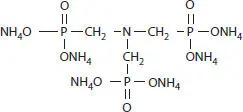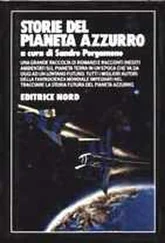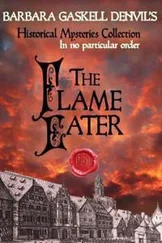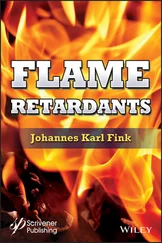(2.1) 
When MAP and DAP are heated under ammonia pressure and preferably in the presence of urea, relatively water-insoluble ammonium polyphosphate is produced [71]. At least five crystalline forms of APP have been reported in the literature [72] but only forms I, and II are commercially sold as flame retardants. It is believed that form I has a linear chain structure, relatively low molecular weight (from 30 to about 150 repeating units), relatively low thermal stability (onset of weight loss at about 240°C) and relatively high water solubility. It is mostly used in coatings. Form II is higher molecular weight (700-1000 repeating units), probably cross-linked [73], with onset of weight loss at ~270°C, and much more water-resistant. Form II is used in coatings, thermoset resins, PU foams, textile backcoatings and thermoplastics. APP is the principal component of many intumescent FR systems.
Finely divided ammonium polyphosphate is the major flame retardant for intumescent paints and mastics [74]. When the intumescent coating is exposed to a high temperature, APP yields polyphosphoric acid that then interacts with an organic component such as a pentaerythritol to form a carbonaceous char. This chemistry has been described in detail by Camino and Costa [75] and is covered in detail in this book in Chapter 4. A blowing (gas-generating) agent, typically melamine, is also added to foam the char, thus forming a fire-resistant insulating barrier to protect the substrate. In addition, the intumescent formulations typically contain resinous binders, pigments, plasticizers, and other additives. Mastics are related but more viscous formulations, intended to be applied in thick layers to girders, trusses, and decking for structural fire protection; these generally contain mineral fibers to increase coherence.
The intumescent systems concept originally developed for flame retardant coatings [76] was later adapted for thermoset low temperature processed polyolefins, elastomers and rubbers. The decomposing polymer can produce enough gaseous product for foaming and therefore use of melamine is unnecessary, but a charring agent is still needed. Although intumescent systems based on APP were intensively studied the main factors limiting their broad application are thermal stability and water solubility. Both thermal stability and water solubility can be improved by increasing the chain length (molecular weight) of the polyphosphate. Many varieties of APP form II with various coatings/encapsulations like a silane surface-reacted, melamine surface-reacted, melamine formaldehyde resin coated which further decrease the water solubility are commercially available [77]. These surface treatments allow decreasing the water solubility of form II from 0.5 to 0.01-0.1 g/liter. These coatings can also provide a synergistic effect to APP because they can work as charring agents to further enhance the activity of APP. Although cable manufacturers are trying to adopt APP or APP formulated systems in the cable jacketing [78] it seems to still have a very limited application due to water absorption issues. Silicone surface-treated ammonium polyphosphate in combination with pentaerythritol and methylmethoxysiloxane made by reacting trichloromethylsilane with methanol and water provide high LOI = 34 and UL-94 V-0 ratings in thermoplastic polyurethane (TPU) [79].
Over many years, APP producers and compounders tried to develop flame retardant compositions (formulated packages) which included along with APP the charring and foaming agents. Nitrogen-containing low molecular weight or polymeric products behave the best because they combined both charring and foaming functions [80]. For example, patents suggest that some commercial systems may contain tris(hydroxyethyl)isocyanurate [81], or poly(triazinyl piperazine) [82]. In more recent developments the condensation product of melamine, morpholine and piperazine was suggested as a charring agent and synergist with APP [83]. Reportedly, APP combined with such a condensate provides a V-0 rating in polypropylene at only 20 wt. % loading [84]. Interestingly, aliphatic polyamides which are considered not charrable polymers can also be used along with APP as charring agents. For example, a group of French researchers [85] developed a formulated system of APP/polyamide 6/poly(ethylene-co-vinyl acetate) (EVA), where EVA is used as a compatibilizer for polyethylenic polymers.
Alumina trihydrate (ATH) suppresses the intumescent performance of APP in polyolefins, elastomers and rubbers and therefore these two FRs are almost never used together in these polymers, but it seems not to be the case with unsaturated polyesters (UPE) [86]. In order to decrease the loading of ATH it can be partially or completely replaced with more efficient APP. For example, 15-25 parts APP and 50 parts ATH (per 100 parts resin) will provide a UL-94 V-0 rating in UPE [87]. One academic publication [88] shows that silane treated APP at 35 wt. % loading results in a decrease of the heat release rate by 70%, but more importantly total smoke released decreases by 50% as measured by a cone calorimeter test. Another publication suggests [89] use of diatomite/APP encapsulated in triphenyl phosphate as an effective flame retardant for UPE providing a V-0 rating at 20 wt. % loading. It was also shown that a combination of APP with expandable graphite is beneficial and probably shows a synergistic effect [90].
Although the polyurethane foam (PUF) industry prefers dealing with liquid FRs similar to other foam components, sometimes the use of solid FRs is a more economical way of achieving high flammability standards even if it requires the installation of special equipment. The fire-retardant effect of APP is more pronounced in dense foams, rather than in light foams [91]. For example, use of finely divided APP combined with ATH and a cyclic phosphonate allows achievement of class I in E-84 tunnel test [92] and a combination of APP, ATH and zinc borate allows passing the UL 790 roof assembly [93] test of spray foam roofing. Very efficient combinations of APP with expandable graphite were reported in the literature [94–96]. Guanidinium phosphate can be used instead of APP again in combination with expandable graphite or red phosphorus [97]. Use of lignin-modified polyol along with phenol-formaldehyde coated APP allows a significant improvement in charring of rigid PUF [98]. Usually, triethyl phosphate or some other low viscosity liquid FR is used in combination with solids to improve processability. Interestingly, one recent publication reports on the use of soluble APP in semi-rigid water blown foam [99].
It has been long recognized [100] that addition of a small amount (typically 2-3 wt. %) of multivalent metal salts or oxides provides a synergistic effect in APP based intumescent systems in polyolefins. Zinc borate [101] or some natural products like talc, zeolites [102] and clays show similar behavior. The synergistic effect is observed in a very narrow concentration range and it is believed to be due to the formation of cross-links in polyphosphoric acid involving multivalent metals [103]. Increasing the concentration of the synergist results in the formation of stochiometric crystalline phosphates which negatively affect intumescence and the effect switches from synergistic to antagonistic. In the academic literature there are numerous publications on the benefit of the addition of organically modified clays to the intumescent systems. Synergistic effects are often, perhaps erroneously, attributed to the physical effect of the clay reinforcing char, whereas it could be the same effect of chemical interaction with polyphosphoric acid and cross-linking.
Читать дальше













